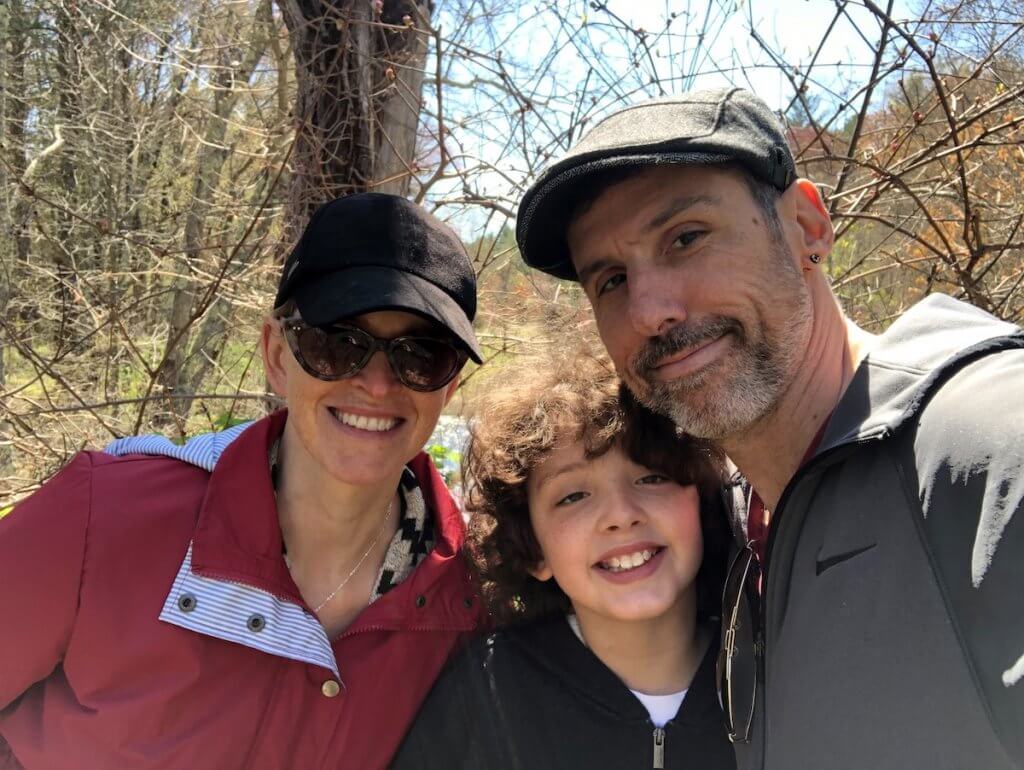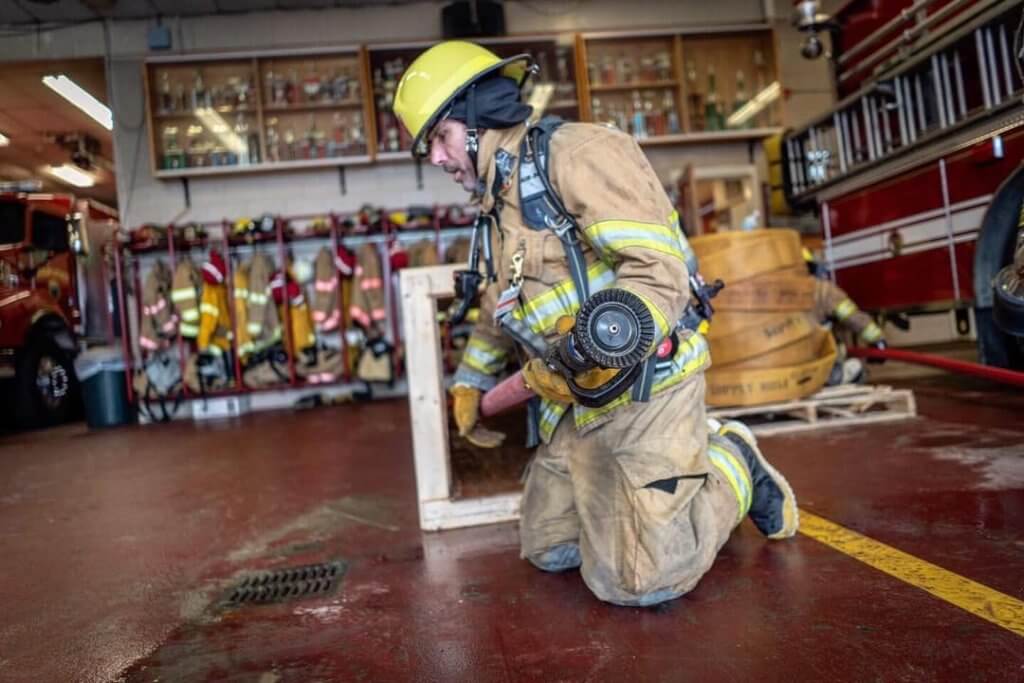As a former volunteer firefighter, Paul Calnan prided himself on being ready for any emergency. He thought nothing could rattle him — until, at age 47, doctors discovered a large, malignant tumor in his liver.
The diagnosis was stage IV intrahepatic cholangiocarcinoma, a rare form of bile duct cancer that had presented in Calnan’s liver. By the time it was found, the tumor was too big to safely remove surgically — but if not controlled, it could be fatal.
For a man used to saving others, being the one in need was unfamiliar, unsettling territory.
“I was shocked and terrified, honestly,” Calnan recalls. “All I could think about was my wife and 10-year-old son. My biggest fear was being taken from my family.”
Teamwork and expertise proved critical to Calnan’s treatment. His longtime primary care physician was based at St. Elizabeth’s Medical Center in Brighton, Mass., which provided Calnan with quick, easy access to on-site oncology experts at Dana-Farber Cancer Institute at St. Elizabeth’s Medical Center. Led by oncologist Olga Kozyreva, MD, a multidisciplinary team including St. Elizabeth’s surgeon Claudius Conrad, MD, PhD, devised a treatment approach to shrink and remove the seemingly incurable tumor.
They would find it in immunotherapy, which uses the body’s own immune system to fight disease. But the process would involve several steps — and some very fortuitous timing.

Right place, right team
Before his cancer diagnosis, Calnan says, he typically gutted through all but the worst medical challenges. When he began experiencing upper shoulder and back pain in mid-2019, he chalked it up to the physical nature of his firefighting duties and regular gym visits.
Eventually, however, the discomfort grew so bad that Calnan had trouble sleeping. He was also losing weight, but it wasn’t until the moment he realized that he could be putting others in danger that he decided to take action.
“We were in a training session at the fire station, practicing pulling people out of water,” he says. “My energy was so far gone, I couldn’t do it.”
Calnan visited his PCP at St. Elizabeth’s, who referred him to a rheumatologist for extensive blood work. Calnan’s liver levels were off, and a June 2020 MRI confirmed the cause of his back and shoulder pain: a cancerous tumor growing in his liver.
At this point Calnan’s PCP turned to Conrad, chief of General Surgery and Surgical Oncology at St. Elizabeth’s. Conrad directs the Boston Liver, Pancreas and Biliary Center, based at the hospital, and his team regularly work closely with Kozyreva and other Dana-Farber clinicians on-site at St. Elizabeth’s.
“Dr. Conrad is a fantastic surgeon with a very unique set of skills,” says Kozyreva. “He not only has technical expertise, but also a deep understanding of cancer medicine and modern cancer management. We have a great partnership.”
Consulting with Kozyreva and others, Conrad concluded that the 10-centimeter tumor involving critical blood vessels in Calnan’s liver could not be removed safely. The next phase of treatment, led by Kozyreva, would attempt to shrink it.

Molecular success
After analyzing a small sample of Calnan’s tumor obtained through laparoscopy, Kozyreva started him on a chemotherapy regimen in June 2020 to reduce the remaining mass. The tumor decreased in size, but not enough.
That September, running out of options, Kozyreva submitted Calnan’s tumor sample for additional testing. Just three months before, the immunotherapy drug pembrolizumab (Keytruda) had been approved by the U.S. Federal Drug Administration for use by liver and bile duct cancer patients with certain genetic mutations. Kozyreva’s hope was that the molecular makeup of Calnan’s tumor might qualify him for Keytruda. It was a slim chance.
“I’ll never forget how excited Dr. Kozyreva was when she came in to tell me that my tumor had a high number of mutations, and I could switch to Keytruda,” Calnan recalls. “Immunotherapy was the game-changer. I started gaining weight, feeling better, and my hair grew back.”
Most importantly, CT scans in January 2021 revealed that Calnan’s tumor had shrunk down to six centimeters. In an 8-hour surgery that month which required major vascular reconstruction, Conrad and his team removed it.
Calnan recovered quickly, and is back to work and enjoying hikes and bike rides with his family. He’s still on Keytruda, too, but only for maintenance. The cancer has not returned, and he’s strong enough to be thinking about resuming his volunteer firefighting duties.
“Paul surprised us twice,” says Kozyreva. “First when we discovered that his tumor had many mutations that made him a candidate for immunotherapy, and then when we were not able to find any viable cancer cells in the tumor after we removed it.
“Today, when I see other patients with incurable tumors, I always think that maybe this will be another case like Paul’s,” she adds. “It’s a great motivator.”
